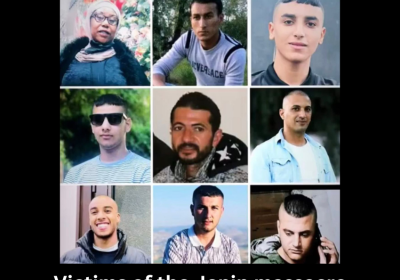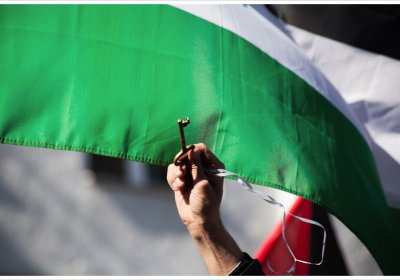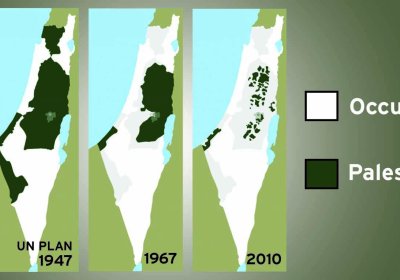While Israeli soldiers stormed Jenin and killed 10 Palestinians, members of Israeli registered professional cycling teams were training on roads in and around Geelong, writes Lisa Gleeson.
Lisa Gleeson
While the Nakba began with the expulsion of Palestinians from their villages and the destruction of those villages, it continues with sniper attacks on Palestinians in Gaza, encroachment of illegal settlements across the West Bank and extreme limitations placed on Palestinians' movements within and between towns, courtesy of IDF-staffed checkpoints, writes Lisa Gleeson.
Palestinians will gather to commemorate Land Day on March 30. Last year, Land Day marked the beginning of the Great March of Return weekly protests in Gaza.
Land Day has its origins in 1976 when Israeli authorities conducted a brazen, large-scale theft of Palestinian land on behalf of settlers. Palestinians responded with a general strike and protests.
After US President Donald Trump recognised Jerusalem as the capital of Israel in 2018, Israel has ramped up its theft of the Palestinian land, writes Lisa Gleeson.
The 45th Friday of the Great March of Return took place on February 1. Each Friday since March 30 last year, Gazans have defied Israeli snipers — who have shot unarmed protesters, journalists and medics — to demand their right to return to their now Israeli-occupied lands.
The United Nations Office for the Co-ordination of Humanitarian Affairs in the Occupied Palestinian Territories (OCHA-OPT) said there have been more than 26,000 Palestinian injuries since the Great March began. Israeli injuries stand at 23.
When it comes to the infrastructure of genocide, you could illustrate it using almost any photo of a school, house, shop or village in the West Bank. You could bookmark a Google maps page of a particular West Bank town — then look again in three or six months time and note the destruction wrought.
This is one way of keeping track of the demolitions of Palestinian homes and Israel’s attempts to impose an “Israeli only” identity on the landscape.
As Palestine’s national day on November 15 and the 34th consecutive Friday of the Great March of Return set for the next day approach, Palestinians in Gaza look set to be handed an Egyptian-brokered ceasefire deal. Palestinians in the occupied West Bank, meanwhile, look set to face the death penalty if they are convicted of “terrorism”.
In the six months since the Great March of Return began in Gaza, with Palestinians demanding the right to return to land from which they were expelled from, Israel has killed 205 Palestinians and injured more than 21,000 others.
Today, Tarshiha is promoted on AirBnB as Ma’alot-Tarshiha in the Galilee region of Israel and, depending on your budget, you can book somewhere chic and stylish to take in the stunning views or a more humble, village style experience. Seventy years ago though, Tarshiha was a village in Palestine.
As Israel passes legislation that reinforces its apartheid system against non-Jews, Palestinians across the West Bank and Gaza, bearing the brunt of Israel’s plethora of discriminatory laws and practice, continue to resist, writes Lisa Gleeson.
Dozens of already existing laws entrench Palestinians’ place as second-class citizens, either within the official borders of Israel or the occupied territories of the West Bank and Gaza.
There is plenty of evidence that the boycott, divestment and sanctions (BDS) campaign targeting Israel, initiated by dozens of Palestinian civil society groups in 2005 in protest against Israel’s apartheid policies, is frightening the Israeli state, writes Lisa Gleeson.
Australia is continuing to avoid any possibility that it might stand up for Palestinian sovereignty and human rights with its behaviour at the United Nations.
- Page 1
- Next page











